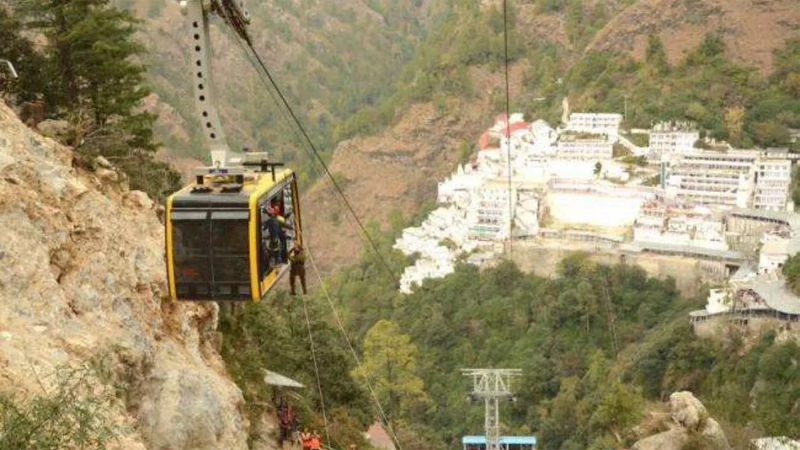The biggest attraction for tourists of J&K is the abode of Shri Mata Vaishno Devi, where pilgrim figures are outstanding. From a mere fourteen lakh pilgrims in 1986 to over one crore for two consecutive years in 2011 and 2012, and around 94 lakhs in 2013, there had been an exponential increase. All this increase happened after the takeover of Shri Mata Vaishno Devi Shrine by the Shrine Board in August 1986, under the guidance of then Governor Jagmohan, and the rest is history. The development work started, and the first task to be completed was relaying the entire track of the yatra. A proper ticketing system, regulation of pilgrims, and creation of facilities at Bhavan. A complete transformation took place as more and more facilities were added to make travel comfortable. Helicopter services and electric vehicles were also introduced, and an alternative tunnel was built to accommodate one crore pilgrims. Even Yatri bhavans were added near the railway station in Jammu. To further make yatra comfortable train services were extended till Katra, bypassing Jammu or Udhampur as transit points. Then a ropeway had also been added to the grandeur of the Bhavan up to Shri Bhairon Mandir, and it is one of the major attractions now. A 3000 pilgrim capacity, five storeys, Durga Bhavan at Bhavan has been inaugurated last week, completed in record 18 months, with all the modern amenities. A few more projects like Skywalk to solve the peak rush crowding near Bhavan will be completed by June and underground cabling by next month’s end.
To give further impetus to pilgrim tourism at Katra, a ropeway is now being proposed to be built between Tarakote Marg and Sanji Chat. Much hue and cry have been raised, and Katra even observed a token shutdown amid fear of the loss of livelihood opportunities after the construction of the ropeway. The administration is explaining that the project is for the comfort of elderly, medically unfit, and disabled people who are not able to offer their prayers at the shrine, but residents are still apprehensive. The lives of pony-wallas, pithus, and palki-wallas are indeed dependent on their profession, which will be definitively affected by the ropeway. The second apprehension is that time spent by pilgrims at Katra will be drastically reduced as tourists will complete darshan and return home without staying at Katra, which will affect the hotel business in a big way. All these apprehensions are true if the ropeway project gets going and is open to all. A 250-crore project cannot be operational for only a limited number of pilgrims, as, let alone its cost, even the operation cost cannot be collected under that assumption. Incidents of landslides had happened in the past on the track here also, causing a temporary halt to the yatra. All these apprehensions are not vague. It is also true that despite taking the train to Katra directly and creating other facilities, we have not been able to cross the highest one crore and five lakh pilgrim figures of 2012. So practically, creating more facilities does mean more pilgrims. Every pilgrimage site can bear maximum tourist numbers, and any attempt to stretch that level is never advisable, especially in hilly regions. We have already seen the disasters and their consequences at many pilgrimage sites, including at Bhavan. A committee has been formed, and it will look into all suggestions. The administration has to take all the factors into account before giving the project its final nod.
Trending Now
E-Paper


